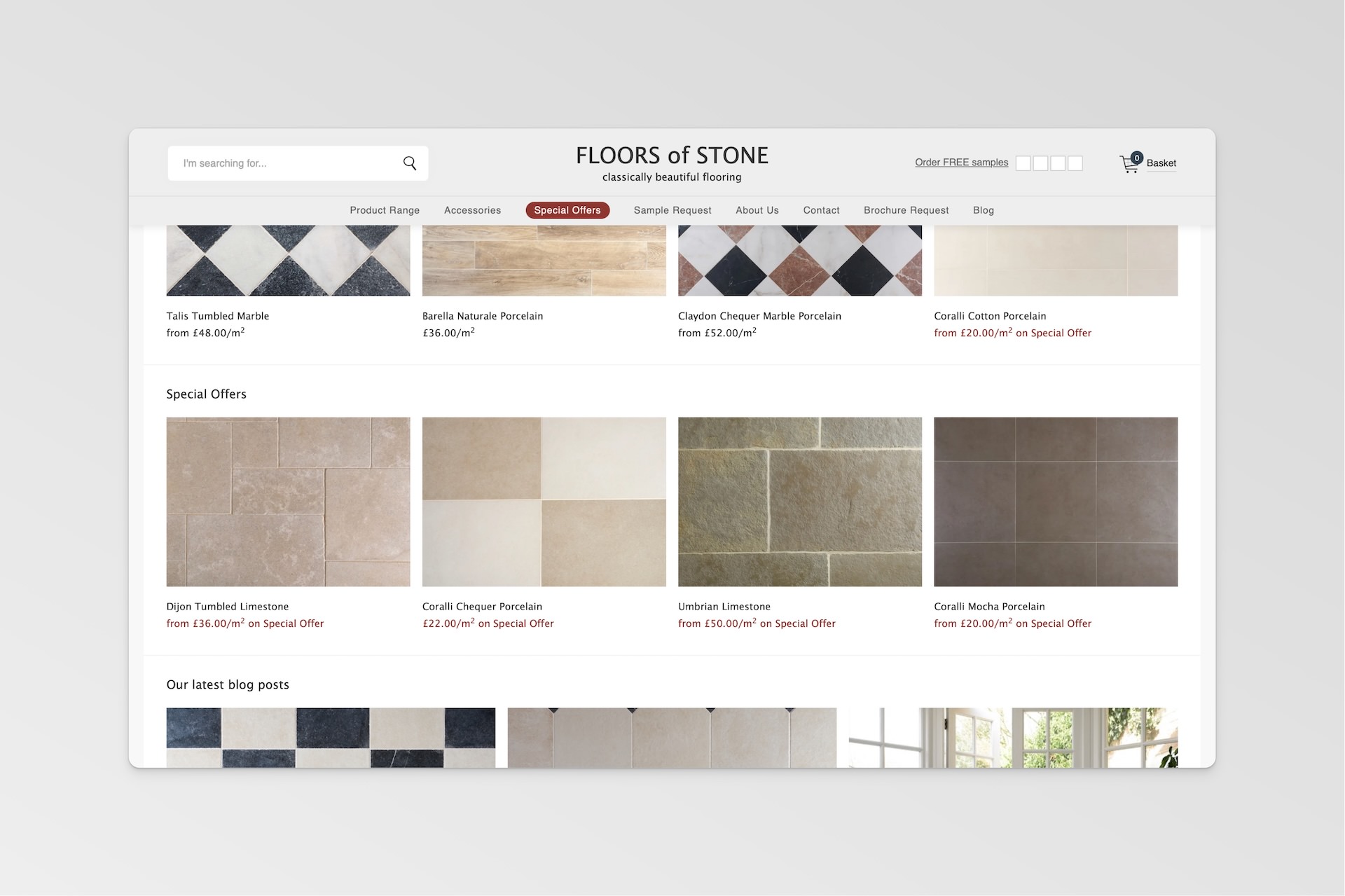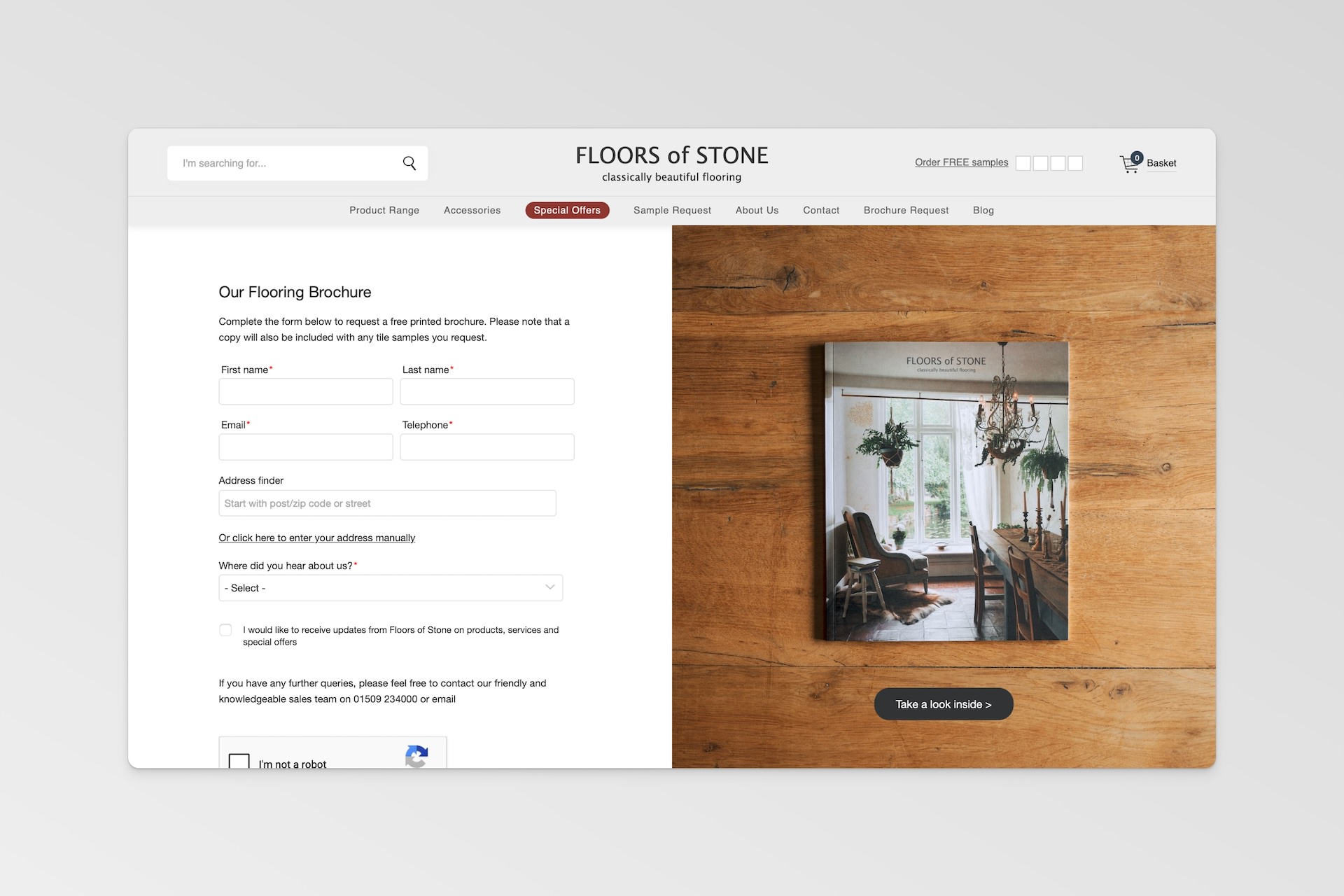Tailoring commerce to reality: Helping Floors of Stone navigate complex selling needs
- Branding
- Web design & development
Floors of Stone needed an e-commerce platform that matched the way their products are sold and shipped. We designed a system that handles that operational complexity while delivering an intuitive experience for customers at home and abroad.

Opening the door to global customers, without overextending
Although Floors of Stone’s full product range is restricted to UK-based online customers, international interest remains strong. To capture and engage that demand without opening up global e-commerce, we introduced a structured way for overseas users to access samples.
For UK customers, sample requests are free and simple to complete. When international visitors enter a delivery address outside the UK, such as Ireland or the USA, the site automatically applies a £25 delivery charge and unlocks a tailored checkout path. Samples are treated as standard basket items with their own fulfilment process, allowing the platform to scale access while keeping logistics controlled and consistent.
This geo-sensitive setup allows the business to maintain clear operational boundaries while still creating meaningful touchpoints abroad. By enabling international users to engage physically with the product, it increases the likelihood of them converting into high-value sales through offline channels.


Translating complex product formats into simple experiences
Floors of Stone’s product catalogue reflects the realities of specialist retail. Their tiles arrive in varied formats—some by square metre, some by tile, others in fixed packs—and almost all in different dimensions. Each format required its own logic, its own validation, and its own way of being presented to customers.
We built a custom commerce framework in Drupal 10 that responds to this diversity. Products are configured individually in the CMS based on how they’re supplied. Customers can enter a required area in square metres, or select a number of tiles—depending on the product.
The system then calculates the appropriate quantity: working out how many tiles (of varying sizes) or how many packs are needed to meet that request, and updating the customer-facing figures accordingly. In the background, it ensures that full-tile and full-pack ordering rules are always enforced.
For the customer, it’s a clean, intuitive interface. Behind the scenes, it’s a dynamic layer of logic that quietly adapts to the real shape of the stockroom—reducing errors, removing guesswork, and saving the team from post-order corrections.